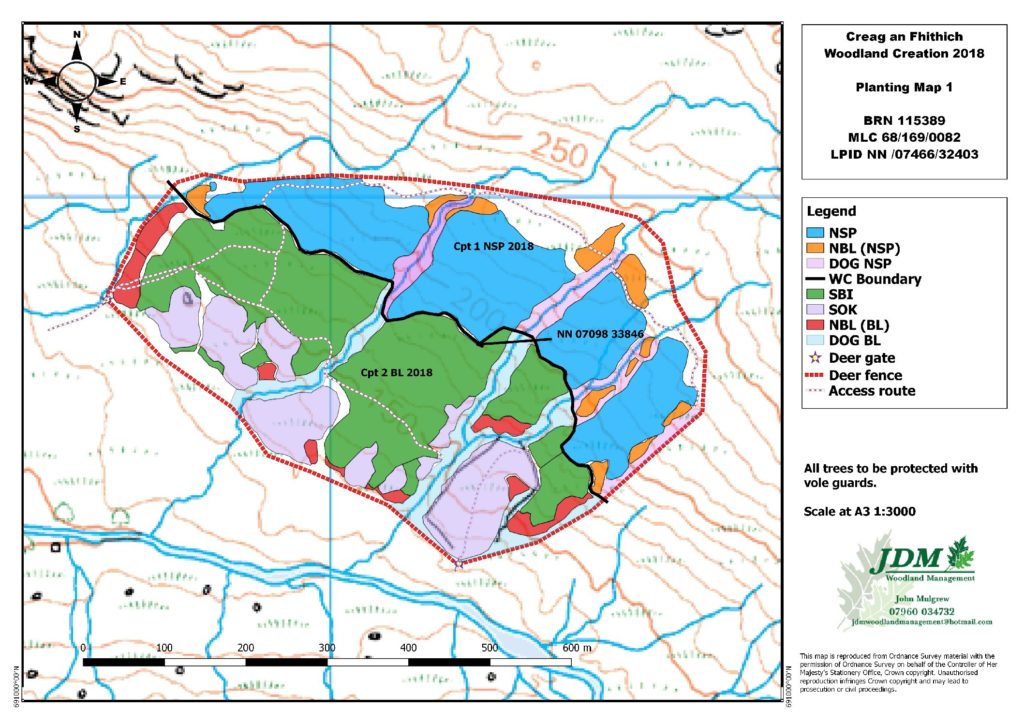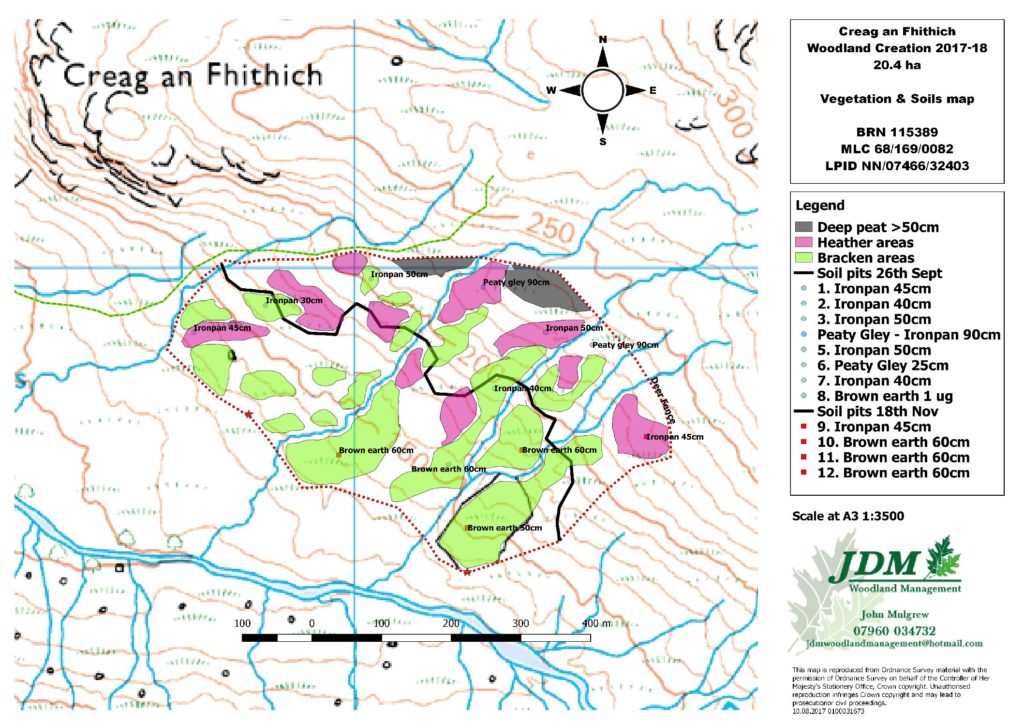Legacy Planting
Glen Noe, Taynuilt, Argyll & Bute
Land use: 20 ha of upland hill ground, previously managed for sheep production and commercial deer stalking.
The Challenge:
The aim of planting was to create a mosaic of diverse, native woodland within a remote Highland glen with very little existing tree cover. In addition to improving biodiversity, the family wanted to create a long-lasting legacy by influencing the return of native Caledonian Scots Pine and Oak/Birch woodland to the glen for the enjoyment of all. The woodland also aimed to:
- Take into account ancient woodland habitats designated as a SSSI/SAC nearby
- Create habitat suitable for improving the prey base for golden eagle (e.g. black grouse) as the glen is within a golden eagle Special Protection Area (SPA)


How we addressed this:
We secured funding for this scheme through the Forestry Grant Scheme https://forestry.gov.scot/support-regulations/forestry-grants and Woodland Carbon Code.
Approximately 20 hectares was planted with trees native to Scotland, predominantly comprising native Caledonian Scots Pine (NSP), Silver Birch and Sessile Oak. In addition, Downy Birch, Alder, Rowan, Bird Cherry, Hazel, willows, Juniper, Hawthorn and Aspen have been planted at a low density around woodland margins and key riparian zones to protect important habitats and further improve local biodiversity.
When designing the woodland, conservation designations, existing flora and fauna, breeding birds, deep peat, views from the local area and continuing use of the estate for sheep production and deer stalking were also considered. Golden eagles were of primary importance and consideration was made for them in the short-term by ensuring that there was no disturbance during operations and in the long-term by creating a habitat that will, in time, improve potential prey resources.
The woodland will be managed using a LISS (Low Intervention Silvicultural System) and will not be thinned or felled, remaining into perpetuity to maximise benefits to biodiversity. LISS woodlands maximise species and structural diversity, providing a more resilient woodland in relation to climate change, pests, diseases and extreme weather events.
The results:
Over time, the woodland will deliver a range of benefits by;
- Commencing the return of native Caledonian Scots pine and Oak/Birch woodland to the glen, benefitting ecosystems, native species and the landscape character to all who visit
- Sequestering carbon, contributing towards Scotland’s climate change targets
All images JDM Woodland Management Ltd.

